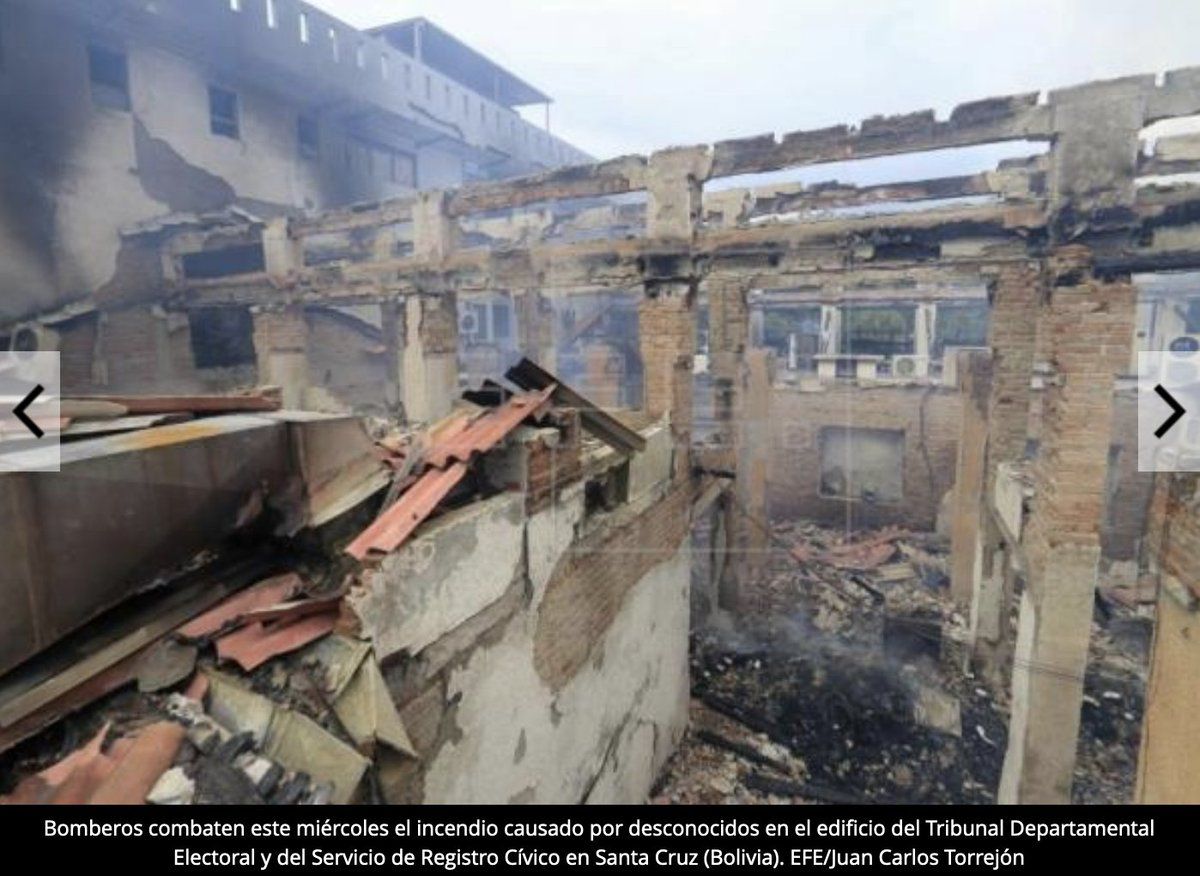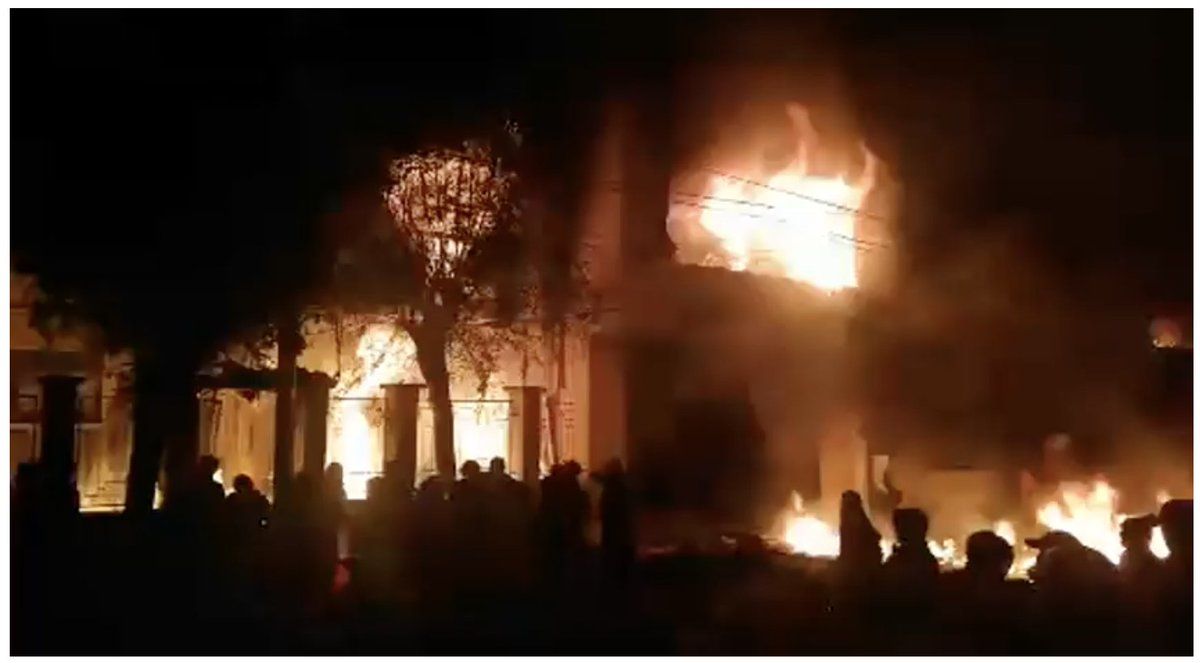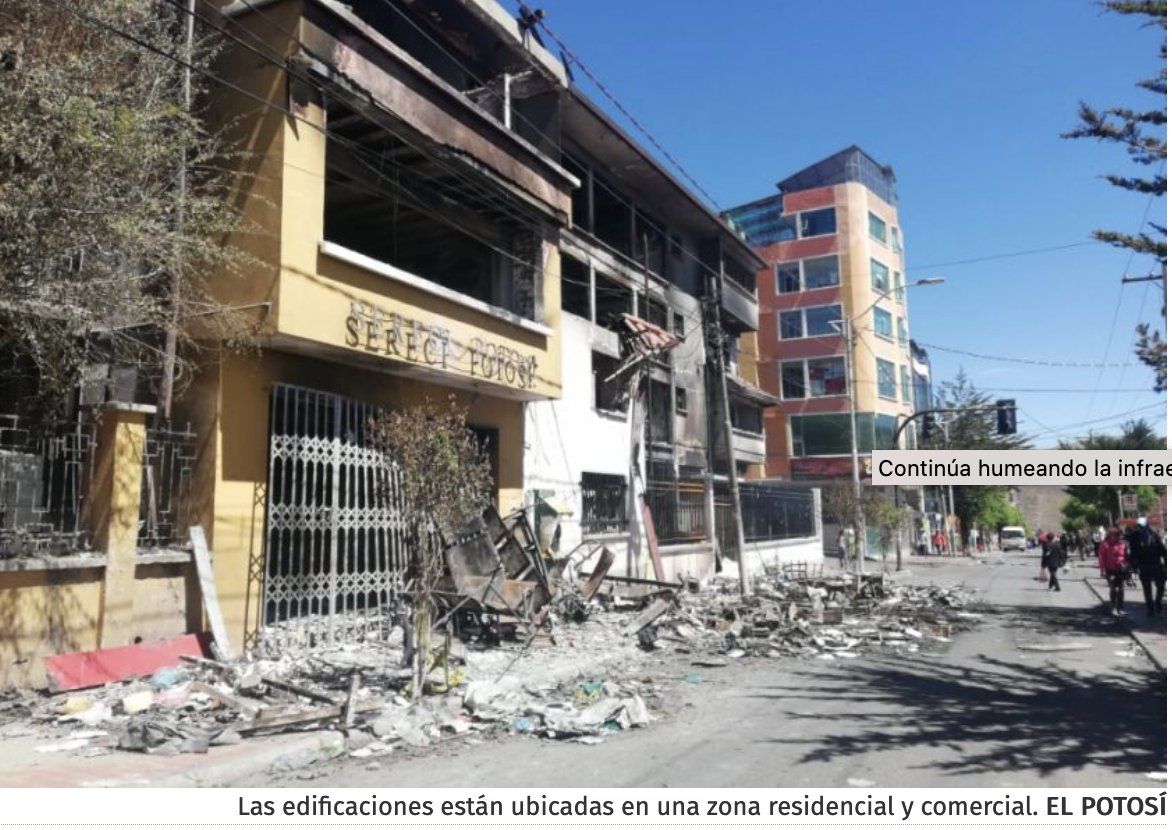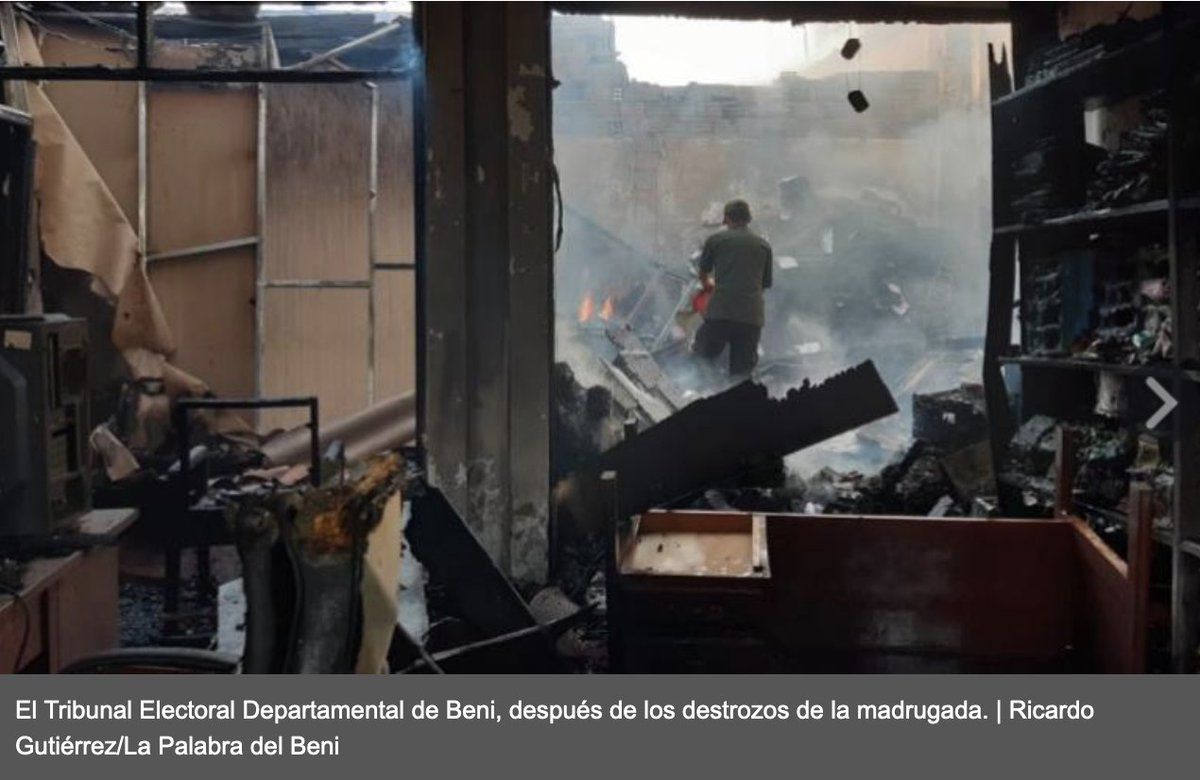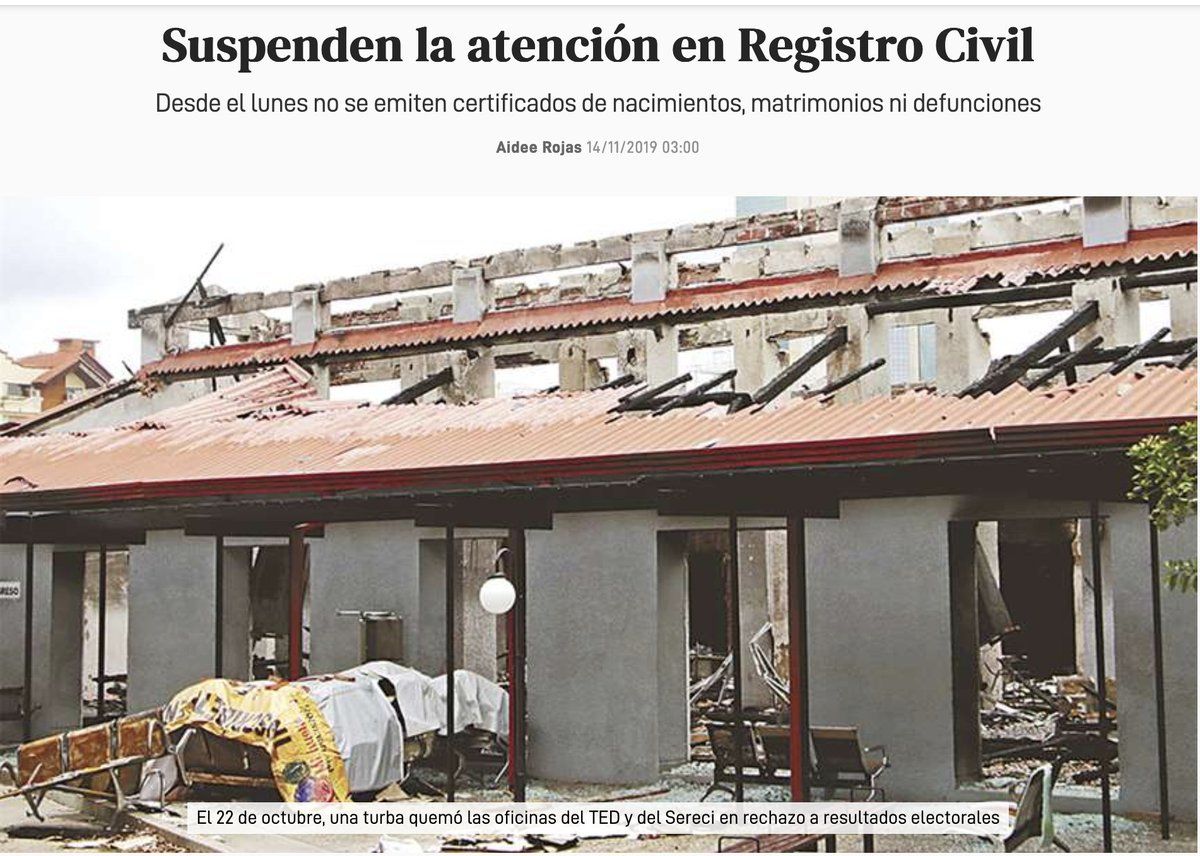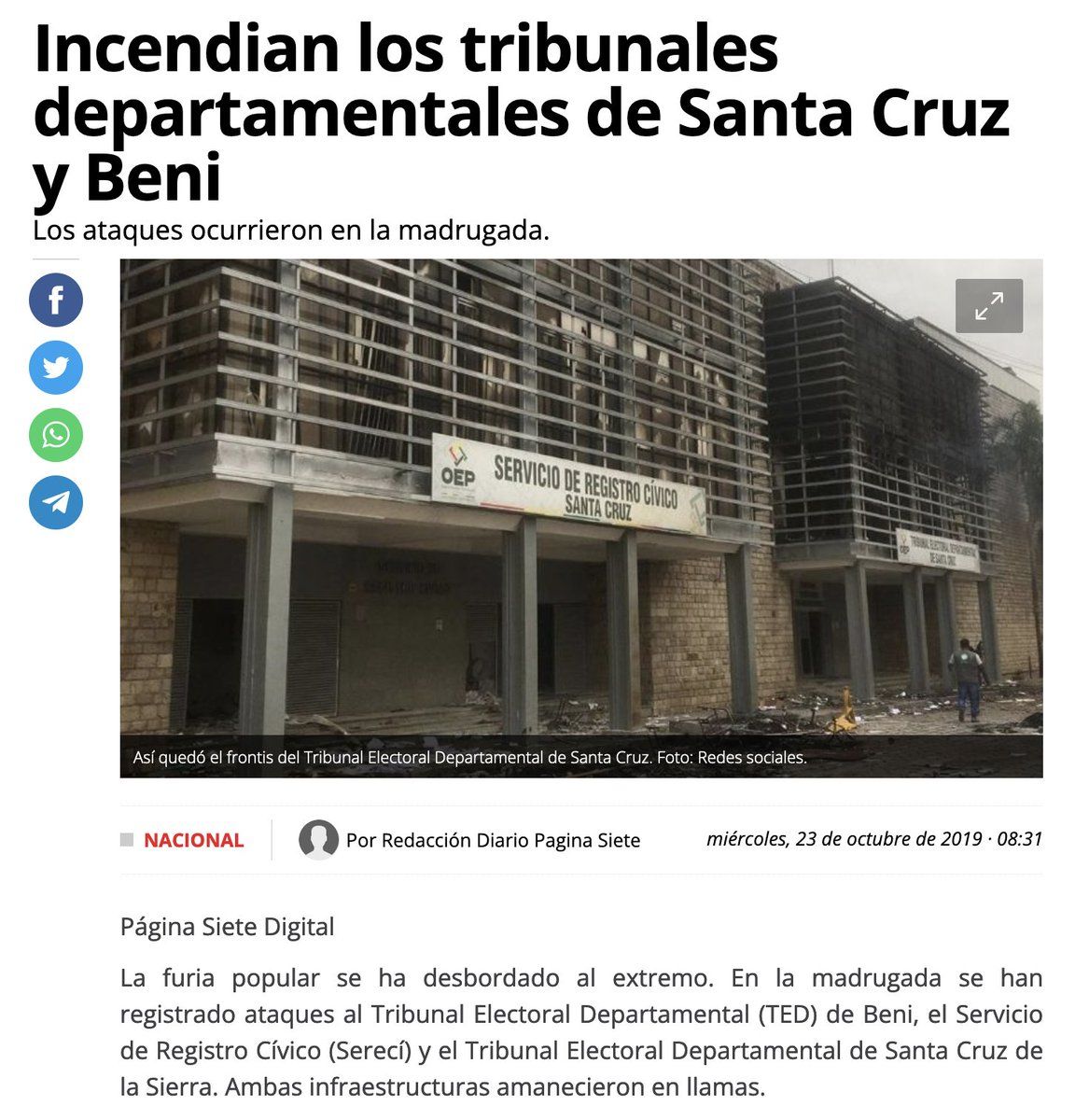-
The wave of arsons began on October 21, after a 24-hour pause in the rapid count of votes. At that moment, there were no final results, but opponents of the government feared that the count would towards Evo Morales winning re-election in the first round.
-
Whatever rage they might have felt at electoral authorities, protesters might have felt that ballots themselves either contained votes that weren't counted fairly or evidence of the fraud they suspected. Instead, they helped to burn ballots or whole electoral offices.
-
Similarly in Sucre, an evidently massive crowd entered the TED. The fire began with electoral materials and consumed the entire building, including seven vehicles and the Civil Registry office. correodelsur.com/seguridad/20211021_se-cumplen-dos-anos-de-la-quema-del-ted-como-avanza-el-proceso.html
-
In Tarija, where the opposition candidate Carlos Mesa won a plurality, protesters focused on the national tax office for complete destruction, but also burned ballots outside the TED. elperiodico-digital.com/2019/10/22/minuto-a-minuto-manifestantes-toman-las-oficinas-de-impuestos-internos-de-tarija/
-
Protests were held below the level of arson in La Paz, Cochabamba, and Santa Cruz on October 21, and held back from serious arson in Cobija, Pando, and Trinidad, Beni.
-
On the next day, October 22, however, young protesters set fire to the Departmental Electoral Tribunal complexes in Santa Cruz and Trinidad, Beni. Police battled protesters within the Beni TED for seven hours. paginasiete.bo/nacional/2019/10/23/incendian-los-tribunales-departamentales-de-santa-cruz-beni-235266.html lostiempos.com/actualidad/pais/20191023/queman-tribunales-electorales-beni-santa-cruz
-
At the Santa Cruz TED, a university student march set fires. Damage was extensive and documents in the electoral and civil registry archives continued to burn into the next morning. eldeber.com.bo/santa-cruz/danos-por-el-incendio-en-el-ted-y-el-sereci-alcanza-los-us-65-millones_10147
-
Still, it takes considerable effort to truly destroy a building by fire, and considerable chutzpah to burn ballots during a disputed election.
-
These fires marked the beginning of an exceptionally destructive month of protest and confrontations, and set the tone for a wider-than-normal use of arson in Bolivian politics.
-
Ultimately both sides would take up this risky and potentially lethal tool. And shift targets from public offices to the private homes of political figures.
-
As I'm writing this week, this use of fire as a political weapon had major precedents during the 2006-08 political crisis.
-
Ultimately, these were collective political acts that had scores or hundreds of participants. Serious judicial and/or political accountability for them is unlikely to come through the same kind of prosecutions that are targeting orchestrators of killing during the 2019 crisis.
